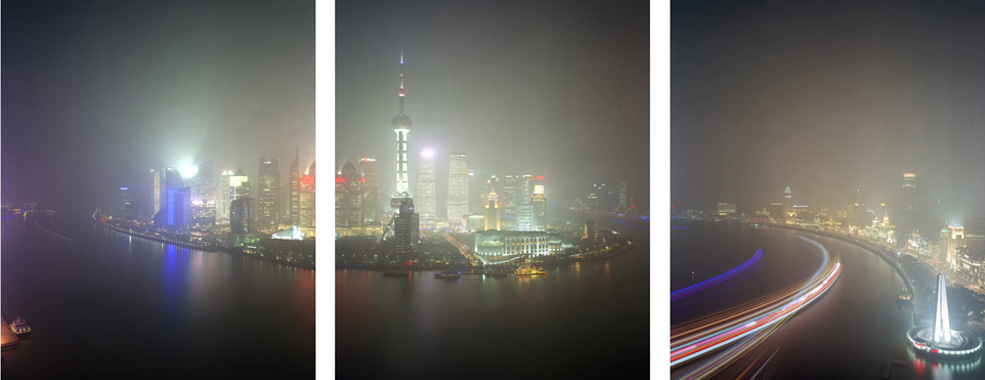Cities of light
A photographer based in Australia captures nearly a decade's worth of nighttime glow


If you work on a project about cities and their sprawl for long enough, as photographer David Stephenson has, a certain level of nostalgia — and concern — inevitably bubbles to the surface.
"I have noticed, as I have photographed more cities, particularly in Asia…that with increasing globalization, there is a homogenizing effect," Stephenson wrote in an e-mail interview.
"Cities everywhere are looking more and more alike … Also, returning to cities such as Las Vegas after living outside of the U.S. for many years, I have noticed both the degree of urban sprawl, and the increasing level of light pollution which obscures the view of stars in the night sky."
The Week
Escape your echo chamber. Get the facts behind the news, plus analysis from multiple perspectives.

Sign up for The Week's Free Newsletters
From our morning news briefing to a weekly Good News Newsletter, get the best of The Week delivered directly to your inbox.
From our morning news briefing to a weekly Good News Newsletter, get the best of The Week delivered directly to your inbox.


The Australia-based photographer, 58, first conceptualized "Light Cities" in 2005 while traveling through Asia, Europe, and Australia for another ongoing project, Vaults. But the seeds of the luminous project stem from Stephenson's college days in Colorado and New Mexico.
"I grew up in Washington, D.C., which has few distant vistas," Stephenson says. "But when I went to university…I experienced awesome views of cities at night from adjacent mountains."


Those mountain vistas have made cities such as Las Vegas and Denver favorites for shooting; Stephenson also names New York as a top stop, thanks to its "scale, its waterside location, and its eclectic mix of old and new architecture," he says.
As for the megacities of Tokyo, Hong Kong, and Shanghai?
A free daily email with the biggest news stories of the day – and the best features from TheWeek.com
"With populations between 20 and 30 million," Stephenson says, "they are really extraordinary sights."


The photographs are beautiful, to be sure, but Stephenson places his work firmly in the slightly murkier "sublime" category. The very lights which provide such striking images also speak of deeper problems perpetuated by humanity, he says. Port cities, for example, play a recurring role in Stephenson's work in part because the water adds a lovely quality to the lights.
But those same cities "are extremely vulnerable to the effects of rising sea levels brought by climate change, so they seem emblematic of some of the environmental problems we face," Stephenson says. "Paradoxically, these problems are exacerbated by carbon emissions from the coal-fired thermal power stations that provide most of the electricity to light these cities and create such night-time visual spectacles."


Fans of Stephenson's project will soon be able to pick up Light Cities in book form; he's also collaborating with Martin Walch on the "Derwent Project," which addresses the crossroads of natural and human-made moments.
"In the epoch of the Anthropocene," Stephenson puts it, "every place is altered by human activity. Distinctions between 'nature' and 'culture' are increasingly difficult to sustain."
Sarah Eberspacher is an associate editor at TheWeek.com. She has previously worked as a sports reporter at The Livingston County Daily Press & Argus and The Arizona Republic. She graduated from Northwestern University's Medill School of Journalism.
-
 ‘Care fractures after birth’
‘Care fractures after birth’instant opinion Opinion, comment and editorials of the day
-
 Shots fired in the US-EU war over digital censorship
Shots fired in the US-EU war over digital censorshipIN THE SPOTLIGHT The Trump administration risks opening a dangerous new front in the battle of real-world consequences for online action
-
 What will the US economy look like in 2026?
What will the US economy look like in 2026?Today’s Big Question Wall Street is bullish, but uncertain
